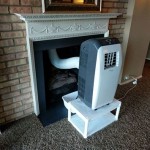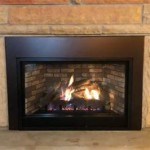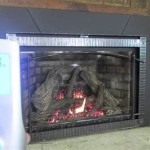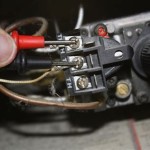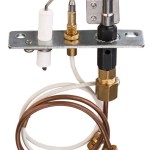Outdoor Gas Fireplace Burner Kits: A Comprehensive Guide
Outdoor gas fireplace burner kits offer a convenient and efficient way to add ambiance and warmth to outdoor living spaces. These kits provide the core components necessary to create a functional and aesthetically pleasing gas fireplace, eliminating the need for a traditional wood-burning setup and providing a cleaner, more controlled flame. This article will explore the components, benefits, types, installation considerations, and maintenance aspects of outdoor gas fireplace burner kits.
A gas fireplace burner kit typically includes several essential components. The burner itself, usually constructed from stainless steel or cast iron, is the heart of the system, responsible for distributing the gas and creating the flame pattern. A gas valve controls the flow of gas to the burner, allowing for adjustment of the flame height and heat output. A pilot light assembly provides a continuous ignition source, ensuring the burner ignites quickly and reliably. Safety features, such as thermocouples or flame sensors, are integrated to automatically shut off the gas supply if the flame is extinguished, preventing gas leaks. Some kits also include a decorative media, such as lava rock, fire glass, or ceramic logs, to enhance the visual appeal of the fireplace.
Key Components and Functionality
The interaction of each component is crucial for safe and efficient operation. The gas valve regulates the gas flow, directly impacting the flame size and heat output. The burner's design determines the flame pattern, ranging from linear flames to more traditional log-like configurations. The pilot light assembly provides the initial spark for ignition. Thermocouples and flame sensors constantly monitor the flame; if the flame is unexpectedly extinguished, the safety device will shut off the gas supply to prevent a potentially hazardous situation.
Outdoor gas fireplace burner kits offer several advantages over traditional wood-burning fireplaces. They eliminate the need for wood storage and the associated mess and labor of hauling and stacking wood. They produce no smoke or ash, contributing to cleaner air and reducing the risk of respiratory irritation. The flame height can be easily adjusted with a simple turn of the gas valve, providing precise control over the heat output. Gas fireplaces also start quickly and reliably, even in cold weather, making them ideal for spontaneous gatherings. They are generally more environmentally friendly than wood-burning options, as they produce fewer emissions.
The use of decorative media adds aesthetic value to the fireplace. Lava rock provides a natural, rustic appearance and helps distribute heat evenly. Fire glass, made from tempered glass, offers a modern, elegant look and reflects light beautifully, creating a mesmerizing flame display. Ceramic logs mimic the appearance of real wood, providing a traditional fireplace aesthetic without the drawbacks of wood-burning.
There are two main types of gas fireplace burner kits: natural gas and propane. Natural gas kits connect directly to a natural gas line, providing a continuous fuel supply. Propane kits require a propane tank, which can be a portable tank or a larger, permanently installed tank. The choice between natural gas and propane depends on the availability of a natural gas line and personal preferences. Natural gas is generally less expensive than propane, but propane offers greater portability and flexibility.
Choosing Between Natural Gas and Propane
The selection of fuel type necessitates careful consideration. Natural gas represents a convenient and cost-effective solution if a natural gas line is readily accessible on the property. The initial setup might involve connecting to the existing gas infrastructure, often requiring professional assistance. Propane, while potentially having a higher fuel cost per BTU, offers greater flexibility. It is well-suited for situations where a natural gas line is absent, allowing the fireplace to be placed in various locations. The propane tank needs to be adequately sized to ensure sufficient fuel for prolonged use.
Installing an outdoor gas fireplace burner kit requires careful planning and attention to safety. It is essential to consult local building codes and regulations before beginning the installation process. The installation should be performed by a qualified technician experienced in gas fitting. The location of the fireplace should be chosen carefully to ensure adequate ventilation and clearance from combustible materials. The gas line connection should be leak-tested thoroughly before using the fireplace.
The first step in the installation process is preparing the fireplace enclosure. This involves constructing a stable and fire-resistant structure to house the burner kit. The enclosure should be made from materials such as concrete, brick, or stone. The size of the enclosure should be proportional to the size of the burner kit. Proper drainage should be provided to prevent water accumulation inside the enclosure. The gas line should be run to the enclosure and connected to the gas valve according to the manufacturer's instructions.
Once the enclosure is prepared, the burner kit can be installed. The burner should be positioned securely within the enclosure, ensuring it is level and stable. The gas valve and pilot light assembly should be connected to the gas line and tested for leaks. The decorative media should be arranged around the burner to create the desired aesthetic. After the installation is complete, it is essential to test the fireplace thoroughly to ensure it is functioning correctly and safely.
Proper maintenance is crucial for ensuring the long-term performance and safety of an outdoor gas fireplace burner kit. Regular cleaning is necessary to remove dirt, debris, and spider webs from the burner and pilot light assembly. The gas valve should be inspected periodically for leaks. The decorative media should be cleaned or replaced as needed. It is also essential to have the fireplace inspected annually by a qualified technician to ensure all components are functioning correctly and safely.
Safety and Maintenance Considerations
Ensuring the safe operation and longevity of the gas fireplace necessitates adherence to a strict maintenance schedule. Regular cleaning to remove obstructing materials such as dust, leaves, and insect nests is imperative. It is essential to check the burner ports for blockages that could cause uneven flames or incomplete combustion. The gas lines and connections must be inspected for leaks, and any necessary repairs or replacements should be carried out by a qualified technician. Moreover, the pilot light assembly necessitates a periodic evaluation to guarantee proper functioning and prevent delayed or failed ignition.
When cleaning the burner, use a soft brush or vacuum cleaner to remove any debris. Avoid using harsh chemicals or abrasive cleaners, as they can damage the burner. When inspecting the gas valve, use a soapy water solution to check for leaks. Apply the solution to the gas connections and look for bubbles. If you detect any leaks, turn off the gas supply immediately and contact a qualified technician. When cleaning the decorative media, remove it from the enclosure and wash it with soap and water. Rinse thoroughly and allow it to dry completely before returning it to the enclosure. Dispose of any damaged or worn-out decorative media responsibly.
While natural gas and propane are relatively clean-burning fuels, carbon monoxide (CO) is a potential byproduct of incomplete combustion. Although outdoor fireplaces are generally well-ventilated, it is crucial to be aware of the risks of CO poisoning. Never operate the fireplace in an enclosed or poorly ventilated area. Install a carbon monoxide detector in your home to alert you to the presence of CO. If you experience symptoms of CO poisoning, such as headache, dizziness, nausea, or shortness of breath, seek medical attention immediately.
Selecting the appropriate size of burner kit is important for optimal performance and aesthetics. The size of the burner should be proportional to the size of the fireplace enclosure. A burner that is too small will not provide sufficient heat or visual appeal. A burner that is too large may produce excessive heat and pose a safety hazard. Consult the manufacturer's specifications to determine the appropriate burner size for your application. Consider the BTU (British Thermal Unit) rating of the burner. The BTU rating indicates the amount of heat the burner can produce. Choose a burner with a BTU rating that is appropriate for the size of your outdoor space and your desired level of warmth.
The type of ignition system is another important consideration. There are two main types of ignition systems: manual and electronic. Manual ignition systems require you to manually light the pilot light with a match or lighter. Electronic ignition systems use a spark igniter to automatically light the pilot light. Electronic ignition systems are more convenient and safer than manual ignition systems, but they may require a battery or electrical connection. Some kits feature a remote control functionality, allowing adjustment from a distance offering increased convenience.
Beyond the core components, consider the various customization options available. Some kits offer variable flame height settings, allowing for fine-tuning of both aesthetics and heat output. Wind guards, typically made of glass or metal, can shield the flames from gusts of wind, maintaining a consistent flame pattern and preventing the flame from being blown out. Protective covers are available to protect the burner kit from the elements when not in use, prolonging its lifespan.
The longevity of an outdoor gas fireplace burner kit depends on the quality of the components, the installation process, and the level of maintenance. Choosing a kit from a reputable manufacturer ensures that you are getting high-quality components that are designed to withstand the rigors of outdoor use. Proper installation is essential for preventing leaks and ensuring safe operation. Regular maintenance will keep the burner kit functioning optimally and extend its lifespan.

Hpc Fire Lbof Electronic Ignition Outdoor Gas Fireplace Burner Kit

Linear 90 Fire Pit Kit Made For Custom Design Ecosmart

Outdoor Lifestyles Contemporary Burner Kit For Courtyard 36 Inch Natural Gas Fireplace

Rectangle Square Round 304 Stainless Steel Propane Gas Indoor Outdoor Fireplace Burner Kit China Fire Pit Made In Com

The Outdoor Plus Linear Electronic Ignition Gas Fire Pit Burner Kit

Hpc Fire Duel Step Ei Outdoor Gas Fireplace Burner Kit Dbof28ei Ab16 Flame Authority

Hargrove Outdoor Wilderness Oak 30 Inch Gas Log Fire Pit Stack Set With Ring Burner

Rectangle Square Round 304 Stainless Steel Propane Gas Indoor Outdoor Fireplace Burner Kit China Fire Pit Made In Com

Hpc Fire Dbof Duel Step Electronic Ignition Outdoor Gas Fireplace Burner Kit

60 000 90 Btus Drop In Propane Fire Pit Kit Gas Fireplace Burner Stainless
Related Posts


